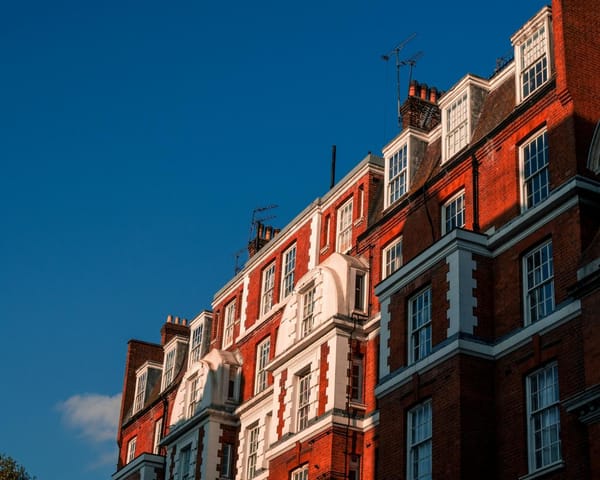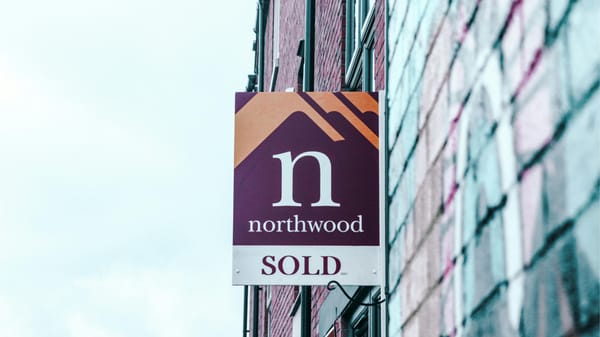Bond Street Reclaims the Top Spot: What London’s Luxury Revival Means for Property Professionals
A 20% rent rise puts Bond Street back on top in Europe — but the implications go far beyond fashion.
Bond Street is back in the spotlight. In 2024, London’s most iconic retail address reclaimed its crown as Europe’s most expensive shopping street, with prime rents rising by 20% to £13,162 per square metre. It now edges out Milan’s Via Monte Napoleone and trails only behind global powerhouses like Fifth Avenue in New York and Tsim Sha Tsui in Hong Kong.
At first glance, this might look like a retail headline. But for property professionals, investors, and developers, the story speaks to something much broader — a reawakening of confidence in London’s premium commercial real estate market.
This article unpacks the resurgence, looks at who’s driving the demand, and explores how landlords, investors and adjacent players can position themselves for what comes next.
What’s Driving the Rental Surge?
The pandemic cast a long shadow over retail, particularly in central London. With tourism dried up and remote work emptying offices, Bond Street faced challenges. Vacancy rates spiked, and talk of a long-term shift away from physical retail took hold.
Fast forward to the end of 2024, and the picture has changed significantly. Footfall is rising again, international travel has rebounded, and luxury brands are doubling down on flagship spaces.
Several forces are at play:
- Global Luxury Resilience: The high-end segment has outperformed mass-market retail. Brands like Rolex, Louis Vuitton and Moncler are seeing record revenues, and they’re reinvesting into physical stores that deliver an experience — not just a transaction.
- Store as Showcase: Luxury brands increasingly view their prime locations as brand flagships, not just sales points. A store on Bond Street isn’t about unit economics — it’s a billboard, showroom, and VIP venue in one.
- Scarcity and Status: There are only so many A-grade units on a street like Bond Street. That scarcity, combined with rising global competition, drives rents higher when demand returns.
This trend is best illustrated by Moncler’s recent acquisition of a second store on Bond Street, focused exclusively on its Grenoble skiwear range. It’s a bold move that suggests confidence, not hesitation.
The Wider Implications for Property Professionals
A headline rent increase might seem like good news only for a handful of landlords on a single street. But there are broader ripple effects across the commercial and residential property landscape.
1. Repricing Prime Assets
Bond Street is often used as a benchmark for valuing high-street retail and mixed-use assets. A clear upswing in rents can shift valuation models, improve debt servicing ratios, and justify capital investment in refurbishments.
This is particularly relevant for:
- Institutional investors with holdings across the West End
- Asset managers reviewing exit strategies on older stock
- Family offices looking to re-enter commercial acquisitions
If you’re holding or considering buying central London retail or mixed-use property, the narrative is now much more positive than it was 18 months ago. That could support upward valuation revisions in your portfolio.
2. Knock-on Effects to Adjacent Areas
When demand for Bond Street tightens, luxury tenants start looking nearby. Already, we’re seeing renewed interest in Mayfair side streets, and even parts of Soho, as brands look for slightly off-pitch locations that still carry prestige.
This opens opportunities for:
- Repositioning older buildings that were previously struggling for footfall
- Attracting boutique luxury brands with lower rental expectations
- Refurbishment plays that align with current tenant preferences
If you're developing or repurposing commercial space within 10 minutes of Bond Street station, the tenant base you target in 2025 may be different from what you imagined in 2022.
3. Reinvigoration of Mixed-Use Schemes
The success of Bond Street lends confidence to developers working on mixed-use projects in Zone 1. High-end retail at the base of residential towers or office buildings can drive placemaking and valuation uplifts.
It also adds weight to arguments in planning applications. Demonstrating that there’s appetite from strong, well-funded tenants can help move negotiations forward with local authorities or heritage bodies.
Landlords: What You Should Be Doing Now
If you’re already holding retail property — or mixed-use schemes with ground floor retail — the Bond Street bounceback should prompt some strategic actions.
- Reassess Tenant Mix: Are you undervaluing your frontage by holding onto legacy leases? Now may be the right time to revisit tenant rosters and consider lease renegotiation or strategic vacancies.
- Improve Fit-Out Potential: Luxury tenants have high standards. Upgrading HVAC, ceiling heights, lighting and façade potential can materially improve your letting prospects and yield.
- Review Rent Review Clauses: Rising headline rents give you more leverage. If you have leases due for review in the next 12–24 months, start the conversation early with an eye on current comparables.
- Explore Joint Ventures: In some cases, brands are open to profit-sharing or revenue-based leasing rather than traditional long-term leases. It’s worth exploring flexible deal structures, particularly for experiential or pop-up concepts.
The Role of the Experience Economy
Bond Street’s revival is not just about price per square metre — it’s about how consumers want to shop.
Luxury retail has always been about experience. Post-pandemic, that trend has accelerated. Shoppers are looking for more than a product — they want environment, exclusivity, and personalised service.
This impacts physical space in three ways:
- Larger Footprints: Many tenants want more space for events, lounges and personal shopping areas.
- Integrated Tech: Brands are integrating digital experiences into store design. Landlords need to support advanced infrastructure.
- Architectural Quality: Good design matters. If your building doesn’t reflect luxury aesthetics, it may struggle to attract this tier of tenant.
For developers and asset managers, that means not cutting corners on refurbishment — and not assuming that square footage alone drives value.
Residential Impacts in the Luxury Zone
Where retail demand grows, residential tends to follow — especially in a market like Mayfair, where prestige drives price.
Developers building or converting residential units in W1 should keep an eye on footfall, retail mix, and street activation. A more vibrant neighbourhood boosts perceived livability, which in turn supports pricing on premium apartments and pied-à-terre units.
Buy-to-let investors in the area may also see stronger rental prospects. While yields remain tight at the upper end of the market, rental demand from international executives, relocating professionals and short-stay tenants is likely to grow alongside Bond Street’s commercial resurgence.
Considerations for Smaller Investors and Secondary Cities
Not everyone can play on Bond Street, of course. But that doesn’t mean this isn’t your story too.
- Inspiration for Strategy: The principles behind Bond Street’s rise — brand alignment, experience-driven retail, and curated tenant mixes — can apply to niche schemes in regional centres.
- Tenant Pipeline Planning: If you’re refurbishing a high street unit in a secondary city, think beyond the basics. What experience are you offering? What story are your tenants telling?
- Watch the Tier 2 Spillover: Brands unable to secure space in Bond Street will look elsewhere. Savvy regional landlords may be able to attract aspirational brands with the right space and footfall.
Final Thought
Bond Street’s return to the top of Europe’s retail rankings is about more than luxury. It signals renewed confidence in London, in physical retail, and in the value of prime property.
For property professionals, this is the time to think boldly but act smartly. The landscape is shifting — not just in pricing, but in tenant expectations, asset use, and investment appetite.
Whether you’re holding West End commercial space or leasing suburban shopfronts, the lessons are clear: quality matters, experience sells, and scarcity still drives value. The winners in 2025 will be those who stay alert, invest with purpose, and understand what today’s premium tenants are really looking for.





